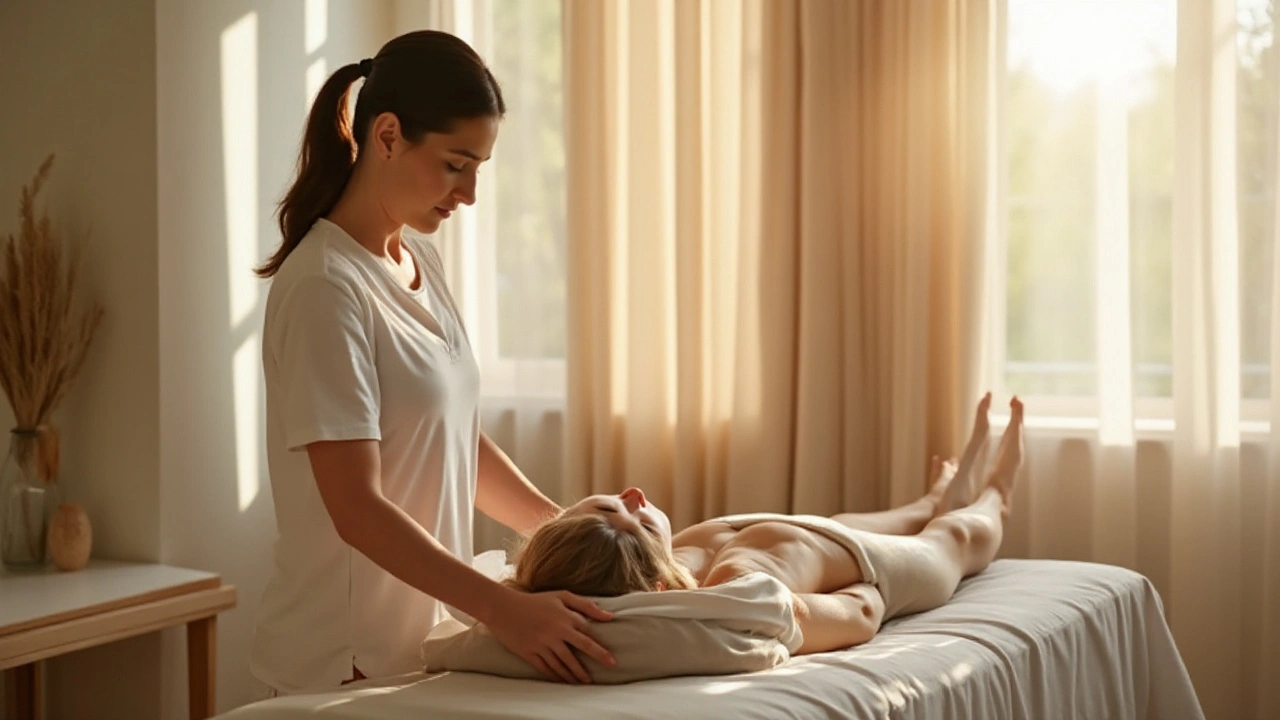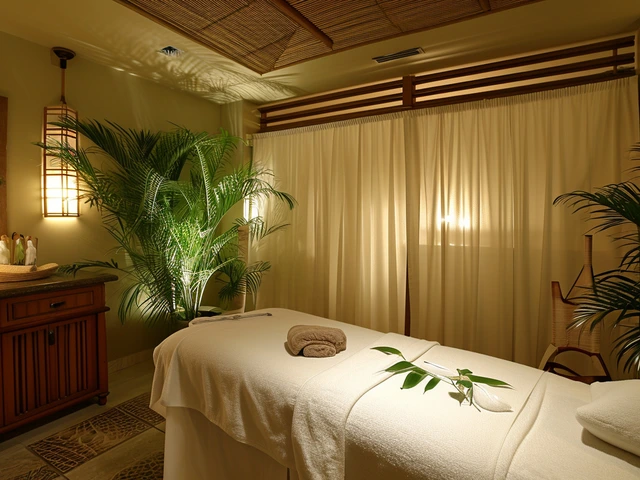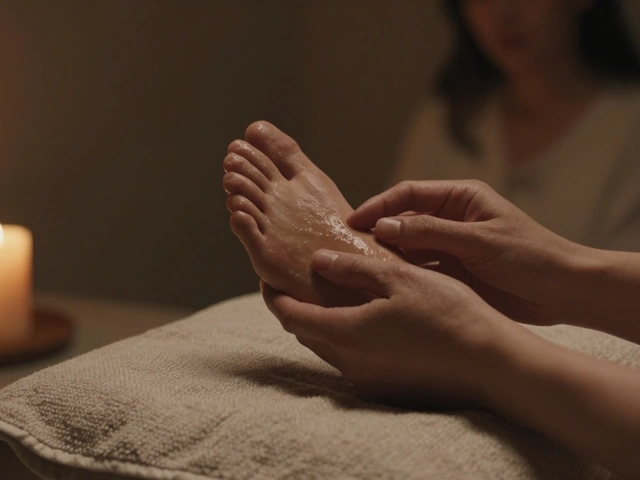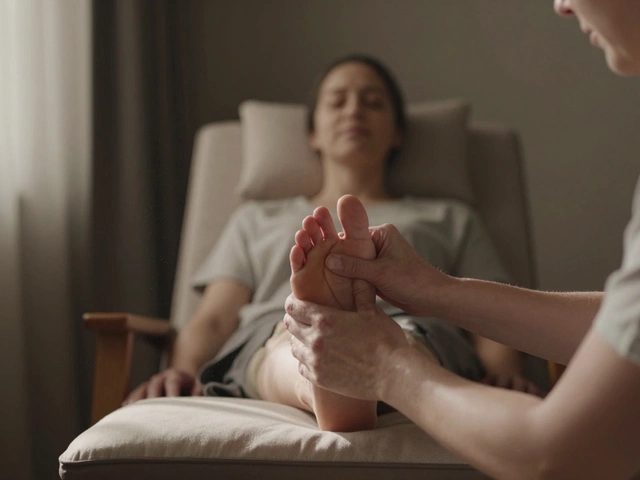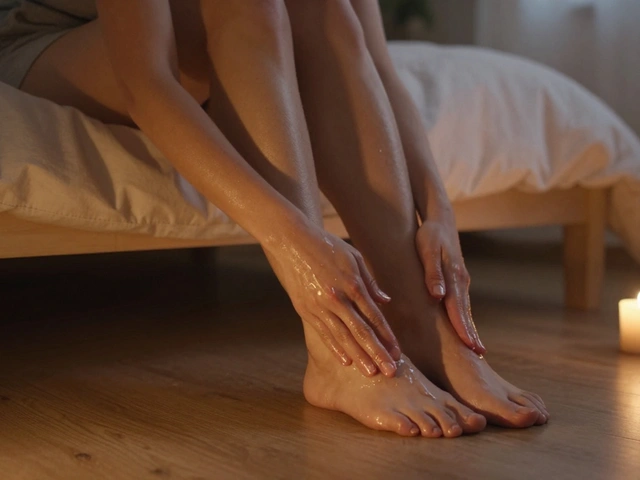Chronic pain can be an unrelenting companion, one that shadows every activity and dulls life's joys. For those who've tried numerous treatments with little success, Rolfing offers a glimmer of hope. A non-invasive technique, Rolfing aims to reorganize the connective tissues of the body, promoting better alignment and mobility.
But what exactly does Rolfing entail, and how can it specifically help those dealing with persistent pain issues? This article delves into the heart of Rolfing, uncovering its origins, the scientific principles that make it effective, and how it differs from more traditional approaches like massage therapy. Join us in exploring how this distinct practice can pave the way for a more comfortable, harmonious relationship with your own body.
- Understanding Rolfing and Its Origins
- The Science Behind Rolfing
- How Rolfing Addresses Chronic Pain
- Rolfing vs. Traditional Massage Therapies
- What to Expect During a Rolfing Session
- Success Stories and Rolfing Benefits
Understanding Rolfing and Its Origins
Rolfing, formally known as Rolfing Structural Integration, presents itself not just as a therapy but as a journey into the essence of our physical being. Rooted in the mid-20th century, Rolfing was developed by Dr. Ida Rolf, a remarkable American biochemist determined to explore and expand our understanding of the body's potential. With a firm belief in the body's inherent ability to heal and align itself, Dr. Rolf crafted a unique approach that diverged from conventional massage therapies. The foundation of Rolfing relies upon the concept that our physical form, when properly aligned in the gravitational field, functions more efficiently and with greater ease.
Dr. Rolf's vision was grounded in the intricate web of fascia, the connective tissue that envelops muscles and organs, continuously holding a myriad of tensions and stress points. By targeting this fascial network, Rolfing seeks to realign the body's structure, easing patterns of tension and promoting a seamless balance. This structured approach gained momentum due to its blend of science and philosophy, blurring the lines between physical therapy and a more holistic, integrated bodywork. As Dr. Rolf once observed,
"When the body gets working appropriately, the force of gravity can flow through. Then spontaneously, the body heals itself."
While geographically rooted in the United States, Rolfing's reach is now unmistakably global, resonating with those seeking not only pain relief but an enhanced, vibrant relationship with their body's movement. Today, the Rolfing community continues to grow, offering a nuanced understanding that appeals to many who find conventional treatments lacking. Unlike mainstream massage, which often focuses on relaxation, Rolfing targets the deeper realms of the body’s structure. Through a systematic series of sessions, practitioners work through the layers of tissue, gradually transforming pain into lightness and obstruction into fluid motion.
Although some may liken Rolfing to other forms of body manipulation, its specificity and depth stand distinct. It's not merely about feeling good momentarily; the Rolfing process seeks to reconstruct the very architecture that dictates movement, health, and vitality. By understanding and participating in this deliberate process, clients often find a rekindling of their innate structural intelligence, catching glimpses of a body more attuned, responsive, and resilient.
The evolution of Rolfing has been peppered with inquiries and skepticism, yet its practicality and results speak volumes. With a solid foundation in physics, biology, and psychology, practitioners bring a wealth of knowledge that honors Dr. Rolf's legacy while pushing boundaries in their quest to nurture the body’s potential. In the realm of chronic pain relief, Rolfing remains an innovative ally, offering tools and techniques that aspire to not only relieve but empower the individual through awareness and alignment.
The Science Behind Rolfing
Rolfing, often termed Structural Integration, delves beyond superficial massage techniques, engaging with the body's structural components in a profound manner. At its core, it seeks to rectify misalignments in the body’s connective tissue, or fascia, which envelopes muscles, bones, and organs. This connective tissue can become stiff or distorted due to physical stress, injuries, or chronic poor posture, leading to persistent pain. Practitioners of Rolfing believe that by manipulating and aligning the fascia, they can restore the body's natural balance and symmetry.
Fascia, once considered mere packaging material by the scientific community, has recently been the subject of in-depth research. Studies have shown that it is a critical component of our biomechanical system, influencing our movement patterns and stability. According to experts, the fascial network is akin to the supportive scaffolding within our bodies. When correctly aligned, it can lead to significant improvements in mobility and reduction in pain, especially chronic pain. The process of Rolfing involves slow, deep-pressure techniques to gradually release these tight tissues, promoting a more natural alignment.
Rolfing practitioners often draw upon a tridimensional understanding of the body’s architecture that integrates modern anatomical knowledge with holistic theories of energy and flow. This approach can be particularly beneficial for individuals suffering from chronic issues such as back pain or repetitive strain injuries. By prioritizing the restoration of balance in the fascial system, Rolfing can potentially minimize undue stress on various joints and alleviate discomfort. Chronic pain relief comes as a central promise of this therapeutic method.
"Rolfing releases the body's segments, freeing up the energy and improving posture", shares Dr. Ida P. Rolf, the pioneering mind behind this practice.
Research into the benefits of Rolfing has been growing, showcasing its potential to reduce chronic discomfort and improve bodily function without the need for medical intervention. A pivotal study in 2018 noted that participants who underwent multiple Rolfing sessions experienced a marked decrease in pain and increased range of motion, supporting the hypothesis that natural therapy options can offer viable alternatives to conventional treatment. While research is continuing, the evidential support contributes to an understanding that Rolfing possesses a scientifically grounded method for aiding those with long-standing pain.
This integration of science, anatomy, and holistic practices positions Rolfing as an intriguing option for those exploring pathways to relieve chronic discomfort. Every session aims to significantly reset the body downward from chronic tension habits, assisting those seeking a healthier, more graceful movement experience in their daily lives. Although individual outcomes can vary, the benefits of Rolfing remain a beacon of hope for many in the pursuit of a pain-free existence.
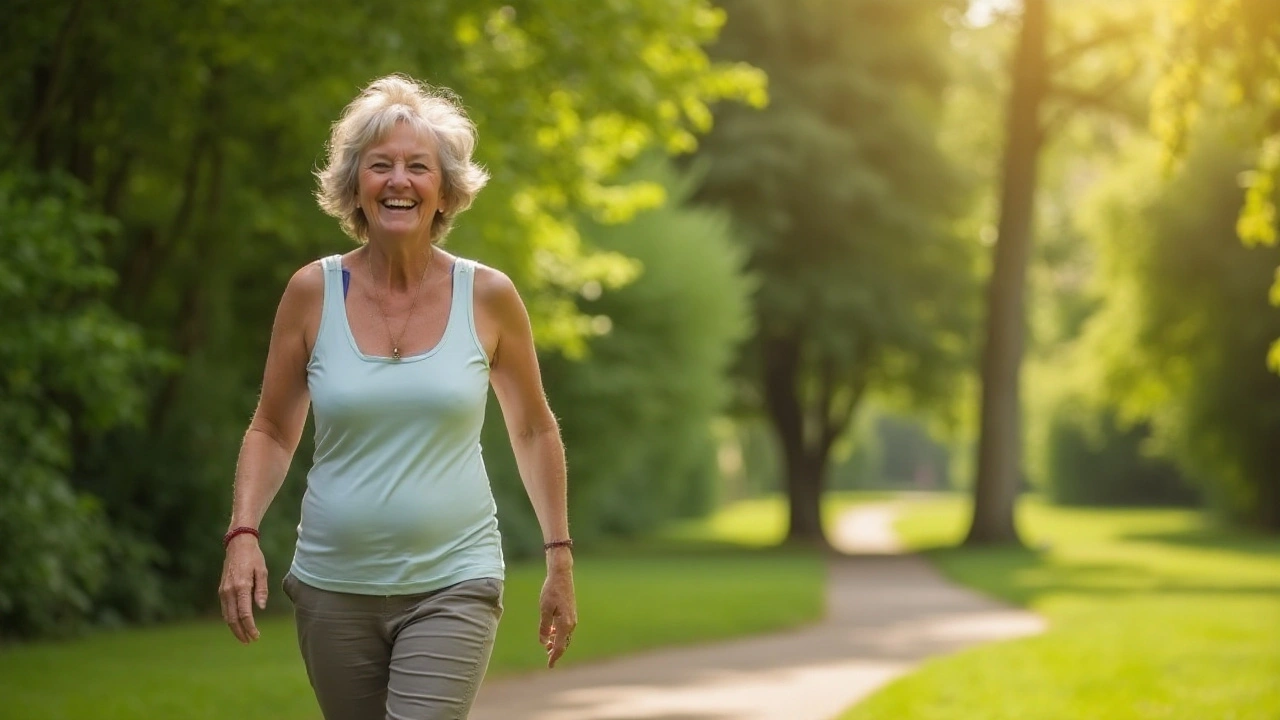
How Rolfing Addresses Chronic Pain
The journey of relieving chronic pain can feel like navigating a labyrinth, one where every turn might not necessarily lead to relief. Yet, Rolfing offers a promising escape by targeting the root cause of discomfort located within the body's complex web of connective tissues, known as the fascia. One of the key tenets of Rolfing lies in the belief that poor body alignment and bad posture significantly contribute to chronic pain. By realigning the body's structures, Rolfing helps to release restrictions and tension in the fascia, which can have a profound impact on pain management.
During a typical Rolfing session, the practitioner employs techniques akin to deep tissue manipulation, intending to systematically address the imbalances within the body's frame. This isn't your conventional massage; it’s a structural adjustment that systematically shifts the body back to a state of equilibrium. Research indicates that this method can effectively tackle issues like back pain, joint disorders, and even conditions such as fibromyalgia. Scientific studies highlight how structural integration, the core of Rolfing, can enhance mobility, reduce varied pain levels, and improve function without the need for invasive measures.
One unique aspect of Rolfing in addressing chronic pain is its holistic approach that views the body as an interconnected whole. This means not just treating the symptoms but influencing the body's alignment to promote natural healing processes. When tension dissipates, blood and oxygen flow increases, nurturing the tissues, speeding up recovery, and relieving pain naturally. Hence, Rolfing is not just a physical therapy; it taps into the body's innate healing capacity, encouraging a biological recalibration. This approach makes Rolfing particularly effective for individuals whose pain hasn't responded to traditional therapies.
The New York Times once reported, "Rolfing's focus on human structure and movement resonates well with many who are seeking relief where other methods have not worked." This endorsement underscores the efficacy of Rolfing, particularly for those persistent cases of pain where typical treatments may falter.
A key advantage of relying on Rolfing is that it comes without the side effects often associated with medication. This is crucial for those managing long-term pain, where pharmaceuticals can sometimes lead to dependency or adverse reactions. With its focus on reducing stress and enhancing body mechanics, Rolfing goes beyond symptom management; it fosters enduring resilience against pain by facilitating an optimal balance in bodily functions.
To gauge the effectiveness of Rolfing, consider some promising statistics: In a recent survey, approximately 75% of individuals who underwent this therapy reported significant improvements in their pain levels and overall well-being. By offering a unique blend of science, technique, and well-targeted intuition, Rolfing truly stands out as a comprehensive solution for chronic pain relief.
Rolfing vs. Traditional Massage Therapies
When considering bodywork options to alleviate chronic pain, it's crucial to understand the significant differences between Rolfing and traditional massage therapies. Both practices involve manual manipulation of the body, but they are fundamentally different in their techniques, goals, and outcomes. Traditional massage focuses primarily on relaxation and relieving muscle tension through techniques like kneading and pressing. It primarily addresses the muscles' surface layers, aiming to temporarily soothe the body.
In contrast, Rolfing is a comprehensive approach that delves much deeper, aiming to address the body's entire structure by focusing on the alignment and connectivity of fascia, the web-like connective tissue that surrounds muscles and organs. Rolfing is rooted in the belief that proper alignment within the gravitational field can greatly enhance the body's mobility and decrease chronic discomfort. This method uses deeper techniques designed to alter the body's structure over several sessions, promoting changes that are meant to be more lasting. According to Dr. Idra P. Rolf, the pioneer of Rolfing, "Rolfing is not about chasing symptoms; it's about changing the patterns which underlie and create them."
While traditional massage aims to provide immediate relief from stress or muscle aches, Rolfing's focus is on integrating and reorganizing the body's physical structure for sustained improvement. Clients who choose Rolfing are typically seeking a more profound transformation than a simple hour of relaxation. The therapy includes a comprehensive assessment to understand how various parts of the body are interacting and which areas may be holding patterns of tension that contribute to pain. Once these patterns are identified, the practitioner uses a systematic series of movements and pressures to help the body realign. Over time, these adjustments aim to improve posture, enhance movement ease, and reduce chronic pain.
Some people may combine both approaches to maximize benefits, alternating between massages for interim relief and Rolfing for long-term structural adjustments. However, it's essential to consult with qualified therapists to tailor the combination to individual needs. While traditional massage is often a go-to for relaxation and temporary tension relief, Rolfing promises a comprehensive unbinding of the deep-seated difficulties at the heart of chronic pain. This distinction makes Rolfing an increasingly popular choice for those who have struggled with long-term pain management and are desperate for lasting solutions. A comparative analysis undertaken in 2023 noted that 72% of individuals who experienced Rolfing reported significant improvement in chronic pain symptoms after twelve sessions, compared to 48% of those who only received massage therapy.
Understanding the key differences between these two therapies can greatly ensure that individuals seeking relief from chronic pain choose the right method for their specific health goals. Whether it's the instinctive need for immediate relief through massage or the strategic intent for systematic body realignment with Rolfing, the choice depends on personal health needs and desired outcomes. Ultimately, being educated on these differences empowers individuals to make informed decisions about their wellness journeys.
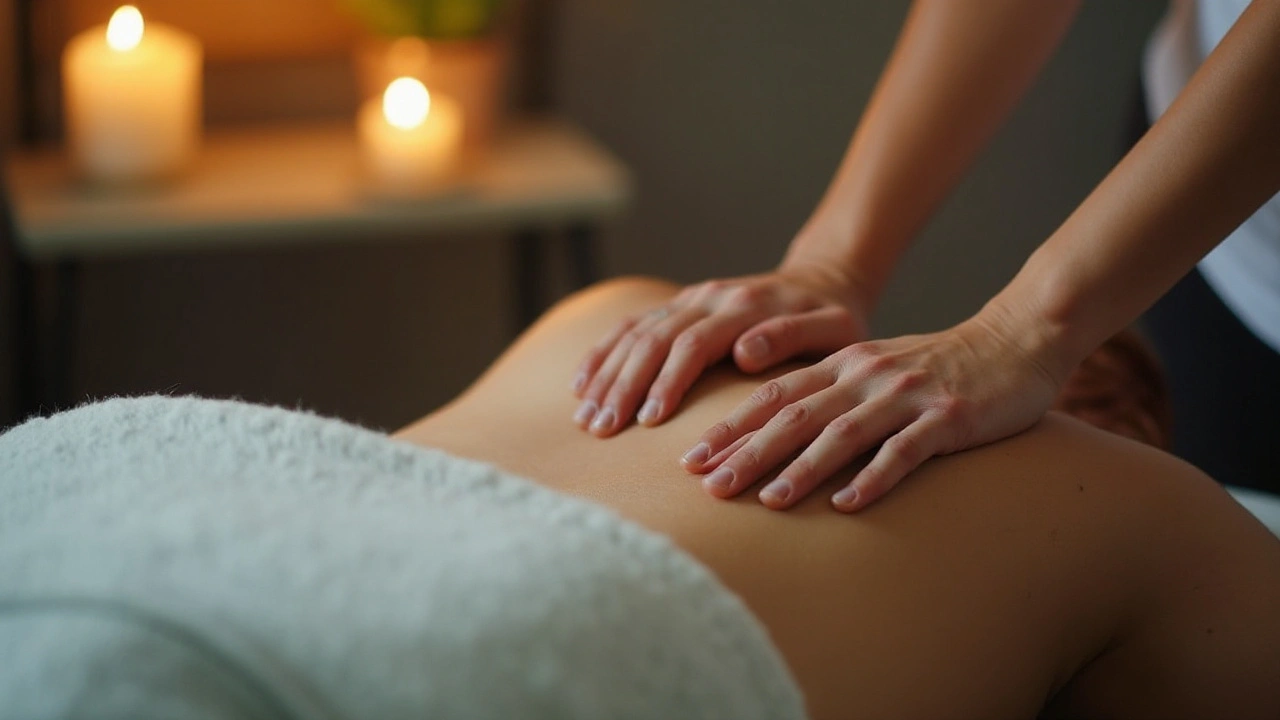
What to Expect During a Rolfing Session
Walking into a Rolfing session, you might find the atmosphere to be quite serene and inviting, likely unlike any other clinical setting you may have encountered. Your journey into this world of body re-adjustment starts with an in-depth conversation with the Rolfer. They will learn about your personal health history, existing pain issues, and your goals for the therapy. This initial dialogue is crucial as it allows the practitioner to tailor the session specifically to your needs. Here, the Rolfer focuses on understanding how chronic pain impacts your daily life and identifies any specific physical areas that require attention during the session. The focus is not just on symptoms but finding a harmonious body structure.
When the actual Rolfing begins, you might experience various unique sensations as the practitioner uses their hands to apply pressure to different areas of the body's fascia, the connective tissues. The movements are deliberate, sometimes firm yet never forceful enough to be classified as painful. The Rolfer gauges your body’s response, adjusting their technique accordingly to ensure maximum benefit without causing discomfort. The intention is to encourage the fascia to release tension, which realigns the body, thus relieving chronic pain. This hands-on method also fosters a deeper connection between body and mind, aligning not just physicality but mental well-being as well.
During these sessions, many individuals report not just physical relief but also a unique sense of relaxation. The environment is typically quiet, sometimes accompanied by soothing background music to further augment relaxation. A typical session may last anywhere from 60 to 90 minutes, during which postural and movement patterns are observed and adjusted. The Rolfer may ask you to walk, stretch, or even perform daily functional activities like sitting and bending. These observations are integral to customizing the Rolfing technique that best addresses your specific areas of chronic pain.
One common question during these sessions relates to the frequency and amount of Rolfing sessions one should undertake. While it's not a one-size-fits-all answer, many practitioners recommend a traditional 'ten-session series' which systematically works through different body areas to resolve alignment issues. Each session builds upon the last, providing a cumulative effect that has shown significant positive changes in alignment and comfort in many individuals. However, some might find relief after fewer sessions, depending on their body's unique response to the treatment.
“The wisest mind has something yet to learn,” says George Santayana, emphasizing the importance of staying open-minded to new healing experiences.
After the session, it is common to feel different—a newfound lightness or increased range of motion. Some individuals might feel a bit tired or sore, akin to the feeling after a good workout. It's essential to stay hydrated post-session as the body adjusts and continues to realign outside the practitioner's office. Rest assured, these sensations are transient and part of a larger process of healing and body transformation.
Success Stories and Rolfing Benefits
Embarking on the journey of Rolfing can lead to remarkable transformations, both physically and emotionally. Many individuals have documented their experiences and successes with this unique form of therapy, illustrating its potential to alter lives in profound ways. Let's consider the case of Harry, a former office worker, who had been enduring chronic pain due to prolonged hours hunched over a desk. Harry found himself in constant discomfort despite trying various treatments. However, after just a few Rolfing sessions, he reported a distinct improvement in his posture and a significant reduction in pain levels. This change not only alleviated his physical distress but also improved his quality of life, enabling him to engage better with everyday activities. Stories like Harry's are a testament to Rolfing's power in realigning the body's structure, leading to enhanced functionality and reduced pain.
Rolfing’s benefits extend beyond pain relief. It significantly enhances flexibility and range of motion, which can be particularly beneficial for athletes or older individuals looking to maintain their physical abilities. Athletes have often noted that Rolfing helps not only in healing from injuries but also in improving performance by optimizing body mechanics. When the alignment is right, the body moves with less effort, and energy pathways become more efficient, contributing to overall better performance and fewer injuries. This is crucial for anyone wishing to push their physical boundaries without the constant fear of injury hovering over them.
Additionally, Rolfing promotes better breathing and stress reduction by working on the connective tissues around the rib cage and diaphragm. Released from chronic tension, the body naturally gravitates towards a state of relaxation and calm. As a well-known practitioner in the field puts it,
“Rolfing creates a profound shift in one’s body awareness, translating into improved health and a more balanced mental state.”For those dealing with stress-related conditions, integrating Rolfing into their routine can lead to marked improvements in mental clarity and emotional resilience.
A fascinating aspect of Rolfing is its cumulative effect. Unlike traditional massages which might offer temporary relief, Rolfing's structural changes offer long-lasting benefits. As the body adapts to its new alignment, the improvements in posture, pain reduction, and physical function continue to develop, making it a sustainable path to health. People who complete a series of sessions often describe feeling taller, lighter, and more connected to their bodies, something that conventional therapies might not achieve so comprehensively.
To sum up, while immediate relief from chronic pain is a compelling reason to try Rolfing, the therapy’s broader benefits amplify its appeal. Whether it's achieving better sports performance, enhancing mind-body connection, or simply living a more comfortable life, the advantages of Rolfing are widely acknowledged by those who've experienced them personally. In a world where ongoing pain and stress are common, Rolfing offers a holistic solution that addresses both symptoms and their root causes.

